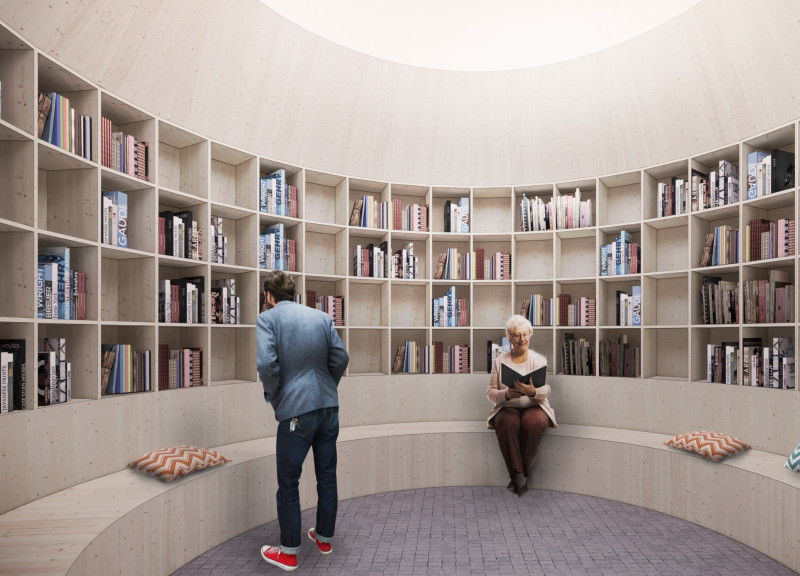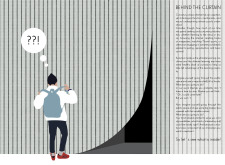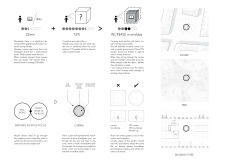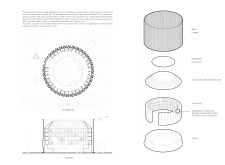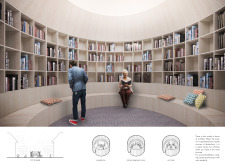5 key facts about this project
The design is a circular pavilion focused on promoting reading and exploration in a lively public area. Located where foot traffic is high, this space is easily accessible, inviting community members to connect with literature. The overall concept centers on encouraging curiosity, drawing visitors inside to engage with a diverse collection of books.
Architectural Elements
A notable feature of the pavilion is its entryway, which consists of a fabric curtain. This curtain serves as a divider, marking the transition from the outside environment to the cozy interior filled with books. As users approach, they encounter a sense of intrigue that makes them want to discover what is inside. The design invites people to leave the busy world for a moment, allowing them to focus on the literary experience ahead.
Spatial Configuration
Inside the pavilion, bookshelves are arranged in a circular layout. This design choice makes it easy for visitors to access books, while also encouraging social interaction among users. The open space promotes a welcoming atmosphere, allowing people to browse through literature freely. The simple and effective layout makes exploring the collection both enjoyable and straightforward.
Natural Lighting
The pavilion features a conical roof with transparent sections, enabling natural light to brighten the interior. This element creates a warm and comfortable environment that enhances the reading experience. The interplay of light and shadow inside serves to create a peaceful retreat where visitors can escape the outside distractions and immerse themselves in their chosen stories.
Community Engagement
The design supports various activities that benefit the community, such as exhibitions, group reading sessions, and lectures. This multifunctional aspect adds to the pavilion's importance in public life, encouraging a culture of learning and sharing. The thoughtful arrangement of the space allows for both individual reflection and community gatherings around literature.
The pavilion's design effectively combines form and function, with the fabric curtain being a key detail that signifies entry into a space of knowledge. It invites exploration, offering a welcoming environment where literature can flourish and engage the community.


